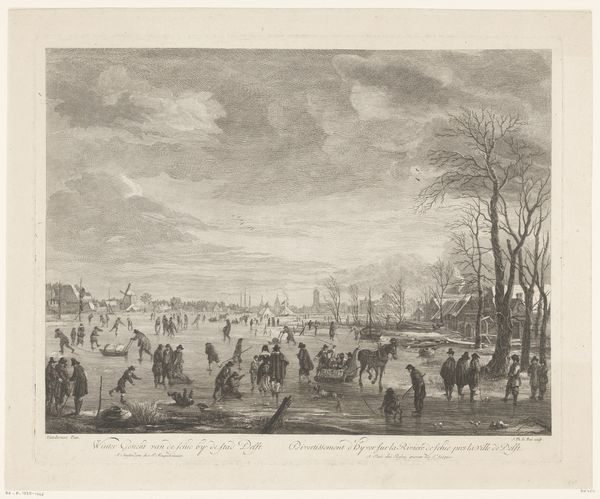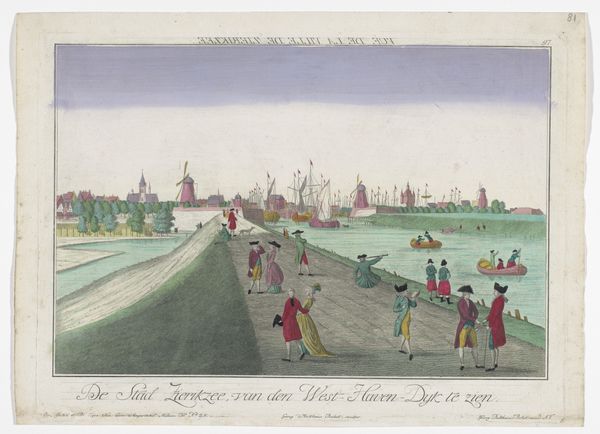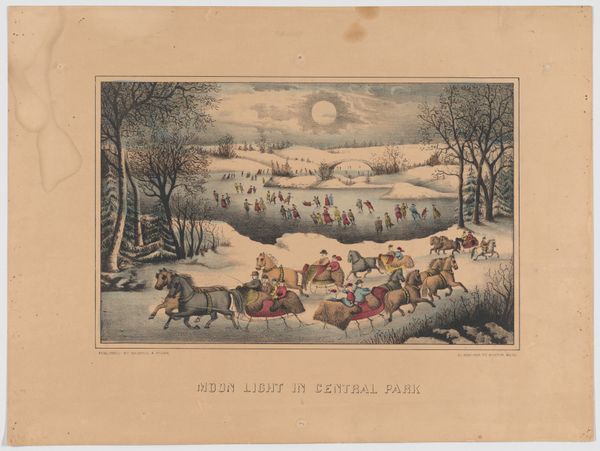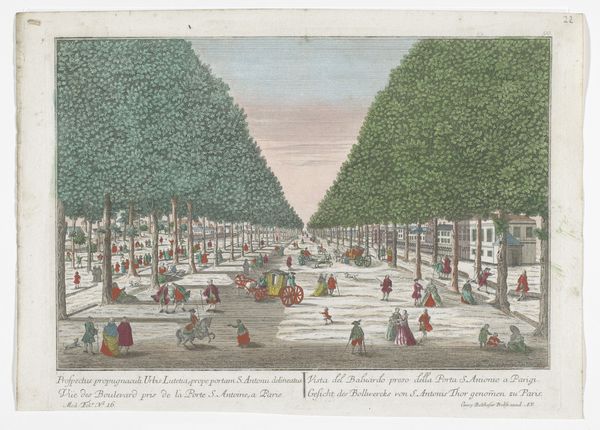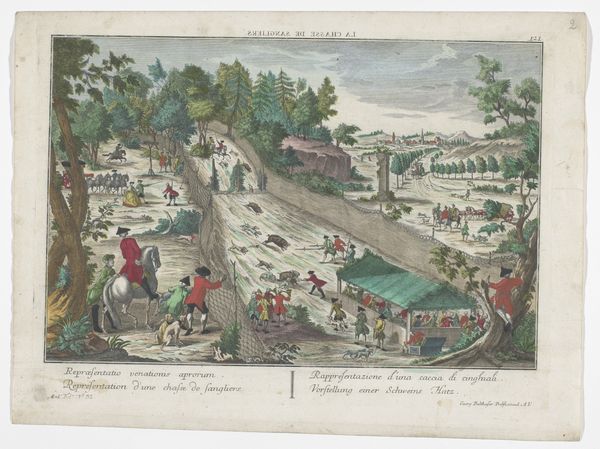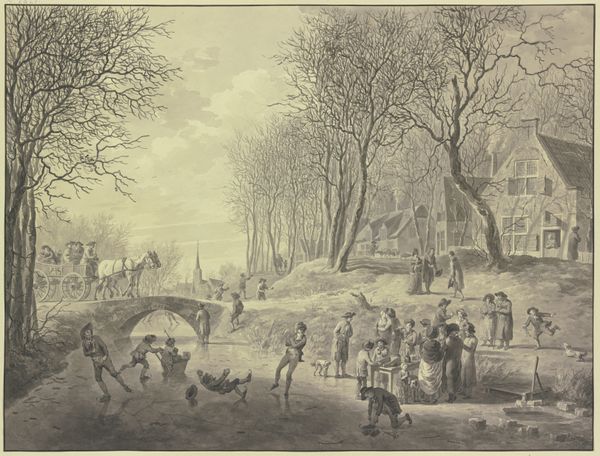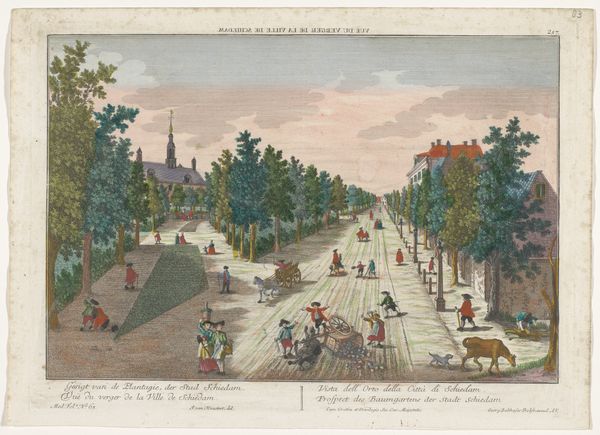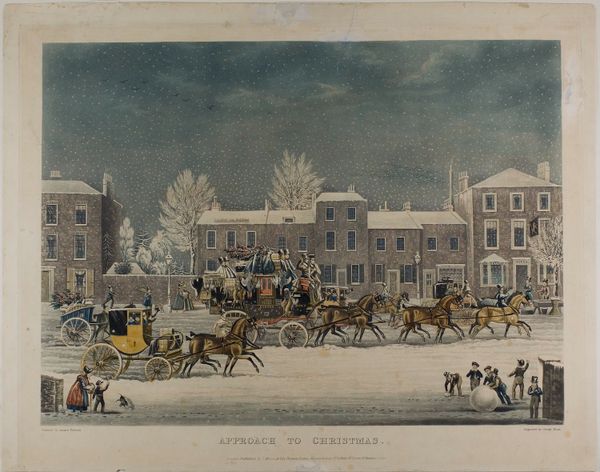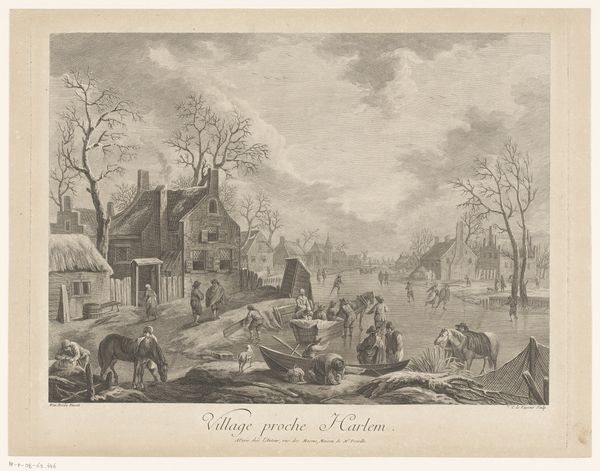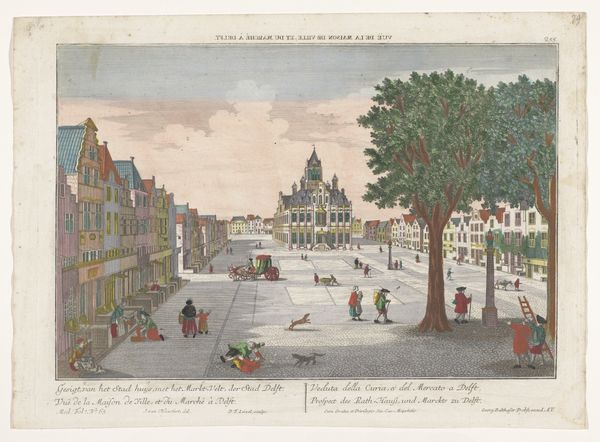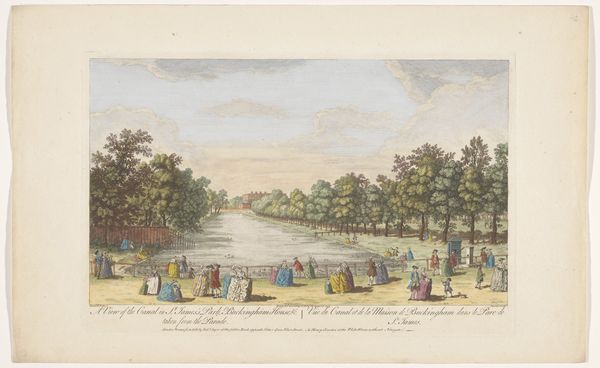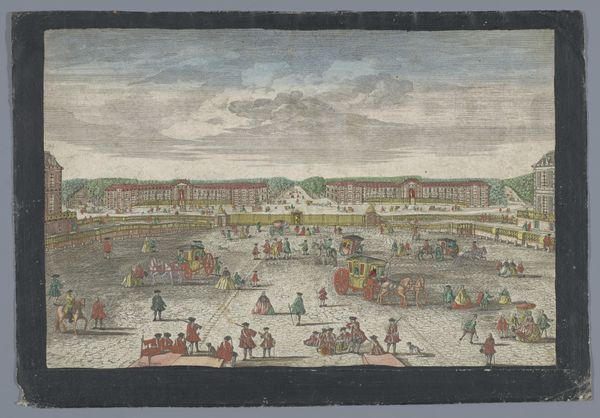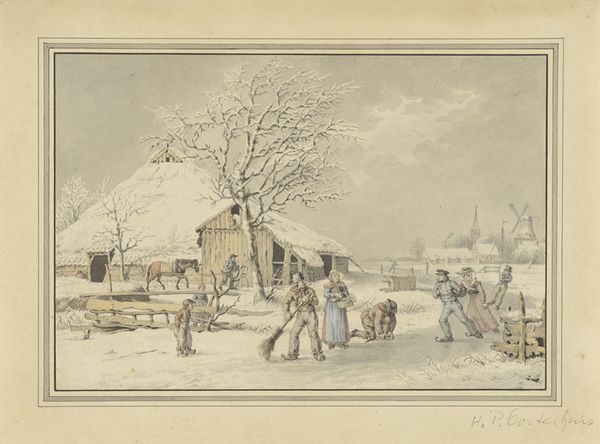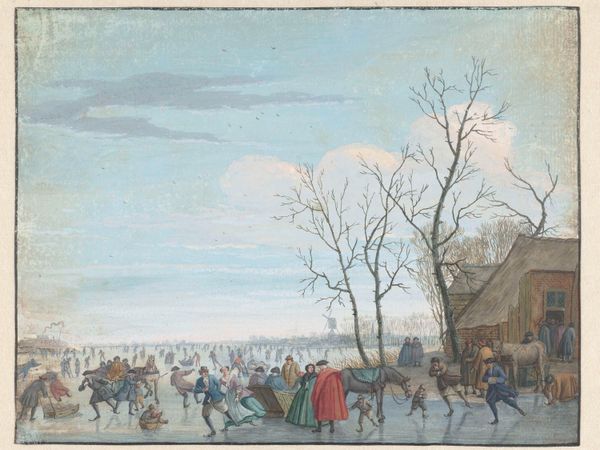
print, etching, watercolor
#
dutch-golden-age
# print
#
etching
#
landscape
#
watercolor
#
watercolour illustration
#
genre-painting
#
watercolor
Dimensions: height 315 mm, width 427 mm
Copyright: Rijks Museum: Open Domain
Curator: What a delightful scene! This is a print titled "Wintergezicht op de Buiten-Amstel te Amsterdam," created sometime between 1742 and 1801, and it looks like a genre painting rendered as a watercolour illustration, etching and print. Editor: It's a busy, bustling scene. Even at a distance, the joy of a winter day is clear in the skaters and sledges out on the ice. Is this typical of Dutch Golden Age representations of winter? Curator: Absolutely. Such scenes offered a look into everyday life. Consider, Amsterdam was one of Europe’s leading economic centers at this time. Genre paintings gained popularity and often depicted commoners. Here the river transforms into a vibrant social space, briefly blurring rigid class lines when citizens from all strata came together. Editor: Blurring, but perhaps not erasing. Notice the details. The sledges and finer clothes on some figures suggest wealth. Do these works serve to flatten or affirm those existing power dynamics? And it is intriguing how different the people look given that it is one image; perhaps multiple draftsmen worked on the engraving, with no consideration for realistic bodily features? Curator: That's a very keen point about socio-economic status, the composition certainly implies hierarchies. Also, you're right, several printmakers produced these images as commodities intended for a broad public. I do like how the houses fade into the background—leading our eye further into the ice and activities along the river Amstel. Note the visual contrast. Dark against light helps bring dynamism. Editor: Definitely! Look how the darkness of the figures stands against the brilliant white ice! There's a stark beauty here, both in the composition and in how it invites us to contemplate questions of accessibility, leisure, and privilege. Curator: It is fascinating how a seemingly simple genre scene opens onto all of these much larger questions, isn't it? I will remember that as I walk through our Dutch Golden Age exhibits. Editor: Agreed. Thinking about it that way brings this frozen moment to life. Thanks to Georg Balthasar Probst's team we are prompted to engage a little bit more actively, socially, historically.
Comments
No comments
Be the first to comment and join the conversation on the ultimate creative platform.
